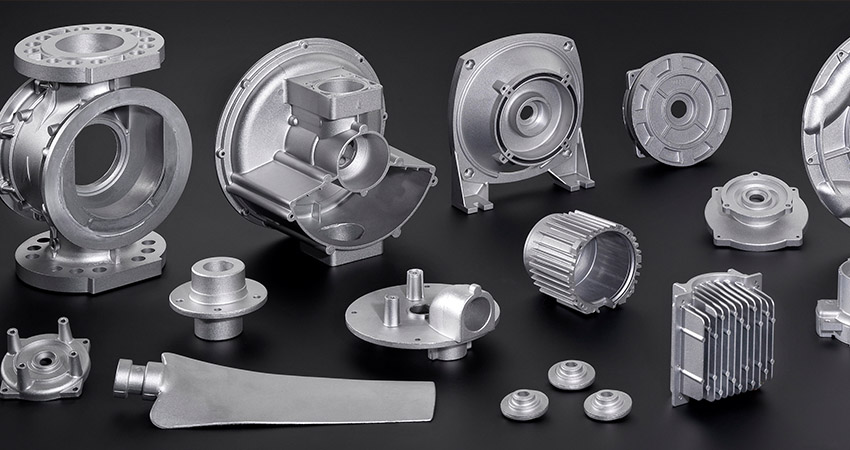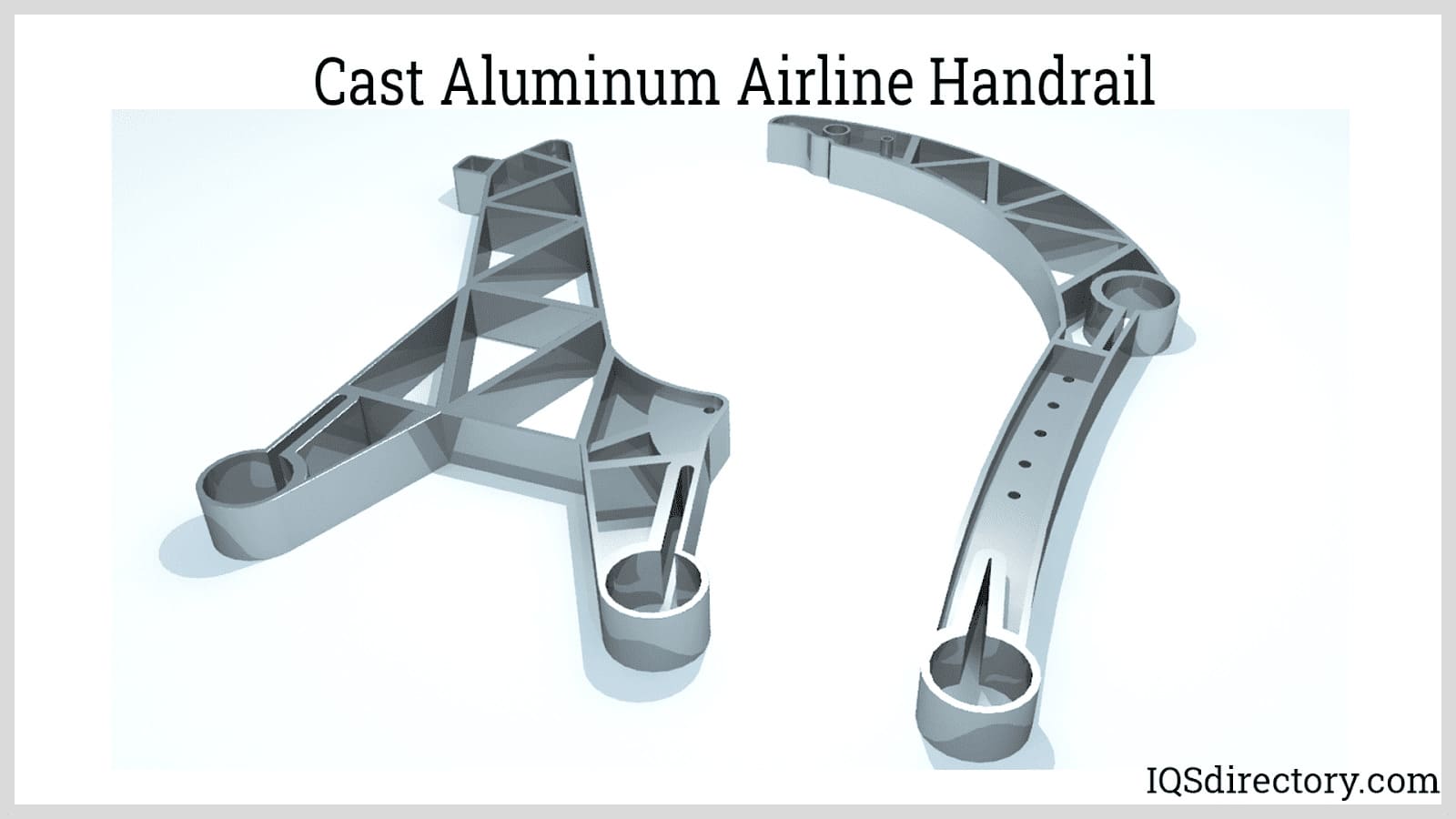The Role of an Aluminum Casting Manufacturer in Eco-Friendly Production
A Deep Study the Aluminum Casting Process: From Style to Finished Product
The light weight aluminum Casting process includes several critical points, each calling for precision and expertise. It begins with the layout phase, where concepts progress into comprehensive specs. The prep work of mold and mildews adheres to, employing numerous casting strategies. After melting and putting, the cooling phase identifies the last homes of the light weight aluminum. However, the journey doesn't finish there; ending up procedures play a substantial duty in accomplishing high quality criteria. What occurs next in this complex procedure?
Understanding Light Weight Aluminum Spreading
Light weight aluminum Casting is an essential process in producing that entails putting liquified aluminum right into a mold and mildew to produce numerous forms and parts. This approach is favored for its capability to create complex styles with exceptional dimensional precision. The procedure begins with selecting top notch aluminum alloys, which are after that thawed at raised temperature levels. When in a fluid state, the aluminum is very carefully poured right into mold and mildews, which can be made from sand, metal, or other materials, depending upon the wanted final item.
Cooling occurs as the molten aluminum solidifies, forming the desired shape. After cooling, the castings are removed from the mold and mildews and go through completing processes such as machining or surface treatment to boost their buildings and look. Recognizing aluminum Casting not just highlights its significance in design and production however likewise stresses its versatility in producing light-weight, resilient elements for various industries, including auto, aerospace, and customer items.
The Layout Refine: From Concept to CAD
The style process for aluminum Casting begins with first principle growth, where concepts are transformed right into substantial requirements. Following this stage, CAD modeling methods are utilized to create accurate digital depictions of the styles. This change from principle to CAD is crucial for guaranteeing precision and usefulness in the Casting procedure.
Preliminary Concept Advancement
Launching the style procedure for aluminum Casting involves transforming abstract ideas into substantial principles. This phase is basic, as it lays the foundation for effective item growth. Developers team up with designers and stakeholders to specify the functional needs and aesthetic aspects of the casting. Conceptualizing sessions often create several concepts, which are then evaluated for manufacturability, cost-effectiveness, and feasibility. Sketches and preliminary versions may be produced to imagine potential designs. Comments from employee and clients is vital in improving these concepts. Repetitive discussions aid to determine potential difficulties, making sure that the final style aligns with both technical specs and customer needs. Eventually, this stage sets the stage for the change from idea to more in-depth electronic depictions.
CAD Modeling Techniques
As the design procedure changes from initial concepts to in-depth representations, CAD modeling techniques become essential devices for designers and engineers. These methods enable the production of specific, scalable electronic models that precisely mirror the intended physical item. Common methods consist of 3D solid modeling, surface area modeling, and parametric design, each offering unique capacities for various task requirements. Designers utilize software like AutoCAD, SolidWorks, and CATIA to refine designs, mimic performance, and determine potential problems before manufacturing. The combination of CAD with various other innovations, such as finite component analysis (FEA), improves the layout procedure additionally by predicting product habits under stress. Eventually, effective CAD modeling simplifies interaction among staff member and enhances the overall performance of the light weight aluminum Casting procedure.
Preparing the Mold And Mildew: Sand, Pass Away, and Investment Spreading
When preparing mold and mildews for aluminum spreading, the option of method significantly influences the final product's high quality and precision. Three primary methods are generally used: sand casting, die casting, and financial investment spreading.
Sand Casting entails developing a mold from sand, which is versatile and affordable, making it suitable for complicated geometries and large components. This method, nevertheless, may generate a rougher surface area finish compared to various other techniques.
Die casting utilizes steel molds, enabling high-volume production and exceptional dimensional precision. This technique is perfect for producing complex styles with tight tolerances and smooth surface areas yet calls for higher upfront prices due to mold manufacture.
Financial investment casting, also known as lost-wax spreading, provides remarkable precision and surface coating, making it ideal for elaborate parts. This technique involves producing a wax pattern, which is coated in ceramic, permitting fine detail during the Casting process. Each method has its advantages, affecting the spreading's applications and features.
Pouring and melting Aluminum: Methods and Equipment
In the aluminum Casting procedure, reliable melting and putting methods are important for accomplishing premium results. Different melting techniques and specialized pouring tools play a substantial duty in making sure excellent fluidity and temperature control - Aluminum Casting Manufacturer. Comprehending these basics is critical for both beginner and experienced foundry specialists
Melting Strategies Introduction
A range of melting strategies are used in the aluminum Casting process, each tailored to details applications and production ranges. Typical methods include crucible melting, where aluminum is heated in a ceramic or steel container, typically appropriate for small sets. Induction melting uses electromagnetic fields to heat light weight aluminum quickly and efficiently, perfect for bigger manufacturing requirements. Electric arc heating systems offer a high-temperature atmosphere, making them ideal for reusing aluminum scrap. In addition, rotating furnaces supply a continual melting process, enhancing performance. Each technique has its benefits, such as power effectiveness, melting rate, and material quality, guaranteeing that makers can choose the most appropriate method based upon their functional requirements and preferred results in the Casting process.
Putting Devices Essentials
Adhering to the melting process, reliable putting equipment plays a significant function in guaranteeing the effective transfer of molten light weight aluminum into mold and mildews. Key parts consist of ladles, putting cups, and automated putting devices. Ladles, typically constructed from heat-resistant materials, are made to hold and deliver molten aluminum securely. Pouring mugs boost control during the transfer, helping with a constant put to minimize disturbance and oxidation. Automated putting devices are significantly preferred, guaranteeing regular flow prices and minimizing human error. These equipments can be set for accuracy, optimizing casting top quality. Furthermore, temperature level surveillance devices are important to ensure the liquified light weight aluminum continues to be within the optimal temperature level range, more enhancing the high quality of the last actors item. Proper selection and maintenance of putting tools are essential for efficiency and safety.

Air conditioning and Solidification: Transforming Fluid to Strong
Air conditioning and solidification play a necessary function in the aluminum Casting procedure, as they figure out the final properties of the actors metal. After putting, the molten light weight aluminum begins to shed heat, changing from liquid to strong. This cooling phase is critical, as it affects mechanical residential or commercial properties such as microstructure, strength, and ductility. The rate of air conditioning can differ based on variables such as mold material, density, and environmental conditions. Quick cooling might cause a finer grain structure, improving strength, while slower air conditioning can lead to coarser grains, affecting ductility.
In addition, uniform cooling is crucial to protect against defects such as bending or fracturing. As the metal solidifies, the development of dendrites occurs, which are tree-like structures that affect the total integrity of the casting. Comprehending the air conditioning and solidification dynamics allows designers and shop workers to enhance the procedure, making certain that the end product meets the required specs and quality requirements.

Completing Procedures: Machining, Layer, and Examination
Completing processes are critical in refining aluminum castings to satisfy strict specifications and boost efficiency. These processes generally consist of machining, examination, and finish, each playing a critical function in achieving the preferred top quality.
Machining includes removing excess product from the Casting to attain exact measurements and surface coatings. Techniques such as milling, transforming, and grinding are generally utilized to assure that the final product fulfills design tolerances.
Finish serves to secure the light weight aluminum surface from environmental variables, improving corrosion resistance and aesthetic allure. Choices include anodizing, powder layer, and painting, each offering unique benefits depending on the application.
Examination is important to validate that the ended up castings satisfy top quality criteria. Methods such as visual examination, dimensional checks, and non-destructive more info screening are employed to find any kind of problems. Together, these completing procedures assure that aluminum castings are trustworthy, durable, and prepared for their designated applications.
Applications of Light Weight Aluminum Castings in Numerous Industries

The consumer products field incorporates aluminum spreadings in items like pots and pans and home appliances, exploiting on their thermal conductivity and resilience. The building sector employs aluminum spreadings in home window frames, doors, and decorative components, boosting looks while keeping functionality. Furthermore, the aquatic market counts on aluminum castings for boat parts, where resistance to saltwater deterioration is vital. On the whole, light weight aluminum spreadings provide innovative solutions across various applications, making them important in contemporary manufacturing procedures.
Regularly Asked Inquiries
What Are the Environmental Effects of Aluminum Spreading?
The ecological effects of light weight aluminum Casting include energy-intensive manufacturing, greenhouse gas discharges, and prospective water contamination. In addition, mining bauxite for light weight aluminum adds to environment devastation, while reusing efforts can reduce some negative impacts.
Exactly How Does Aluminum Casting Contrast to Various Other Metal Casting Procedures?
Light weight aluminum casting typically provides benefits like light-weight residential properties and deterioration resistance contrasted to various other metal Casting procedures. Nonetheless, it might have limitations in toughness and temperature level resistance, making its suitability reliant on certain application requirements.
What Safety And Security Safety Measures Are Needed During Light Weight Aluminum Casting?
Throughout aluminum spreading, safety preventative measures include putting on protective equipment, making certain proper air flow, maintaining tools, and adhering to stringent methods to manage liquified metal. These actions aim to lessen risks such as burns, inhalation of fumes, and tools malfunctions.
Can Light Weight Aluminum Castings Be Recycled After Use?
Aluminum spreadings can certainly be reused after use. The recycling procedure retains the material's residential properties, making it a sustainable choice. This technique substantially minimizes waste and preserves energy, advertising ecological obligation in producing sectors.
What Are Typical Flaws in Light Weight Aluminum Castings and Their Causes?
Common problems in light weight aluminum castings include porosity, cold shuts, and contraction - Aluminum Casting Manufacturer. These problems often occur from insufficient melting temperature levels, inappropriate mold and mildew design, and inadequate air conditioning prices, impacting the overall quality and performance of the final product
Aluminum Casting is an essential procedure in manufacturing that involves pouring liquified light weight aluminum right into a mold and mildew to develop numerous shapes and elements. The layout procedure for light weight aluminum Casting starts with preliminary principle growth, where concepts are changed right into substantial requirements. Starting the style process for aluminum Casting includes transforming abstract ideas right into concrete principles. In the light weight aluminum Casting process, effective melting and pouring techniques are crucial for achieving premium results. A selection of melting techniques are utilized in the light weight aluminum Casting process, each tailored to specific applications and manufacturing scales.